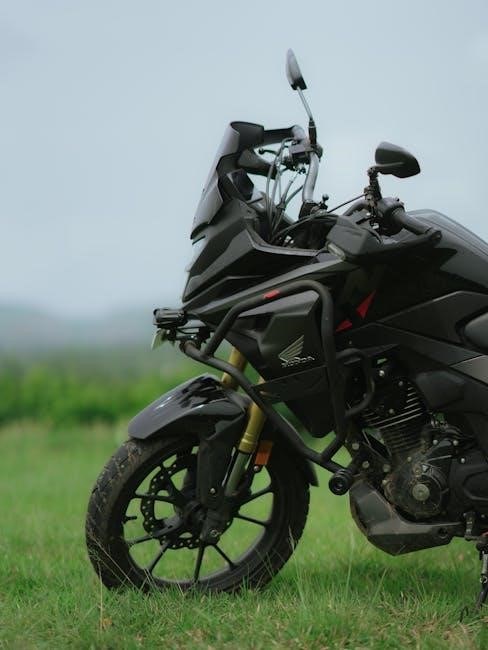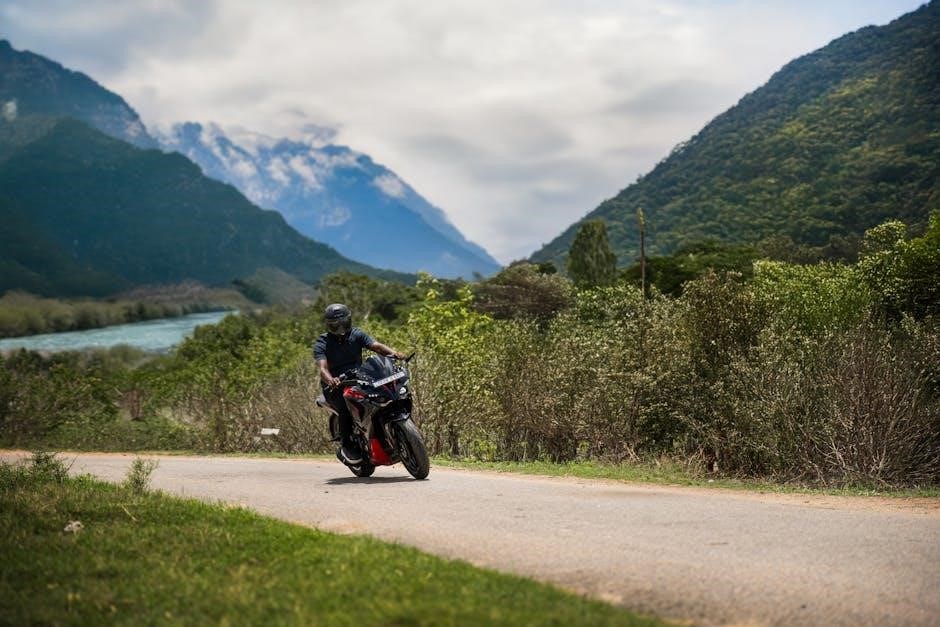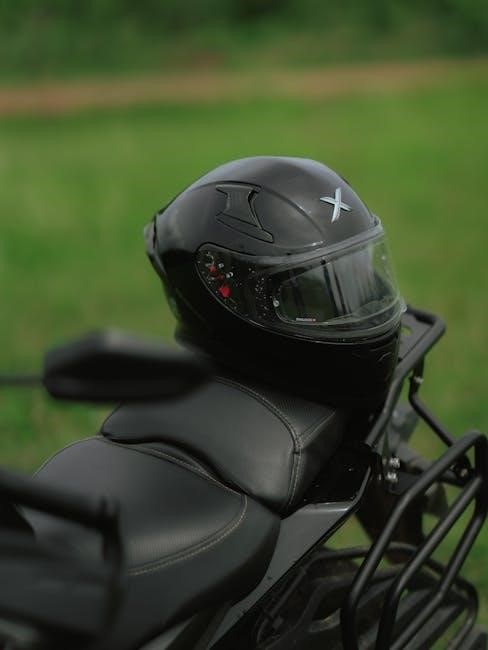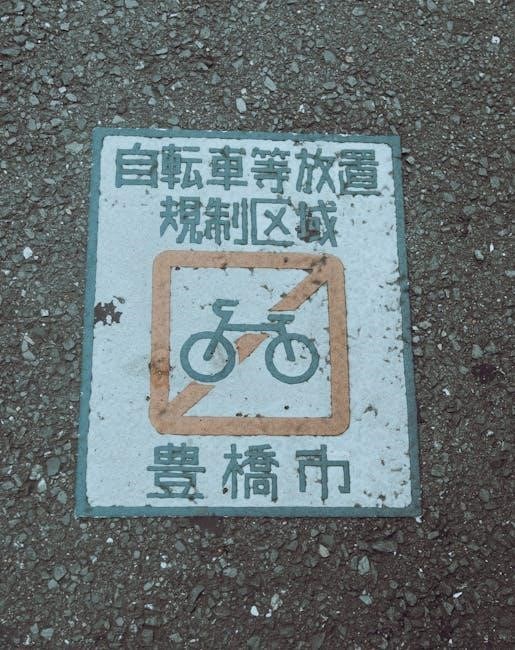Understanding Bike Depreciation
Bike depreciation significantly impacts resale value, with bikes typically losing 50% of their value in the first year and 10% annually thereafter. Condition, brand, and maintenance influence depreciation rates, affecting long-term resale value.
First-Year Depreciation
The first year of a bike’s life typically sees the most significant depreciation, with its value often dropping by 50%. This drastic reduction is largely due to the bike losing its “new” appeal and the saturation of the used market with similar models. High-end bikes may retain value better, but lower-end models depreciate faster. Maintenance plays a crucial role; a well-maintained bike holds its value better. Psychological factors, such as buyers preferring newer models, also contribute to the immediate value drop. Using resources like the Bicycle Blue Book Value Guide can provide insights into this trend, helping owners understand and potentially mitigate depreciation.
Annual Depreciation Rate

After the first year, bikes typically depreciate at an annual rate of 10%. This steady decline continues, influenced by factors like brand, model, and condition. High-end bikes often retain value better, while lower-end models depreciate faster. Market demand, technological advancements, and the introduction of new models also impact depreciation rates. Proper maintenance can slow this process, as a well-maintained bike commands higher resale value. Using tools like the Bicycle Blue Book Value Guide can help owners assess their bike’s depreciation accurately, ensuring realistic pricing when selling. Understanding these rates helps cyclists make informed decisions about purchasing or selling their bikes.
How to Determine Market Value
Research similar bikes, check prices on platforms like eBay and Craigslist, and use tools like the Bicycle Blue Book to assess your bike’s market value accurately;
Defining Market Value

Market value refers to the price a bike would sell for in its current condition. It is determined by comparing similar bikes, considering factors like brand, model, and upkeep. Tools such as the Bicycle Blue Book analyze sales data to provide accurate valuations. This guide assesses a bike’s worth based on its original MSRP, condition, and demand. It also distinguishes between private party sales and trade-in values. Understanding market value helps sellers set realistic prices and buyers negotiate fairly. Regular maintenance and original components can significantly boost a bike’s market value, making it more attractive to potential buyers.
Using Comparison Guides
Comparison guides like the Bicycle Blue Book provide detailed valuations by analyzing sales data of similar bikes. Start by searching for your bike’s make and model on platforms like Facebook Marketplace, Pinkbike Buy/Sell, Craigslist, and eBay. These tools help identify fair market prices based on condition, demand, and location. For uncommon bikes, widen your search or use brand-specific filters. Original components and good maintenance can boost value. Honest condition assessments ensure realistic pricing. Using comps from trusted sources like local bike forums also aids in accurate valuations, helping sellers and buyers agree on a fair price. This method ensures transparency and fairness in bike transactions.
Role of Condition and Maintenance
A well-maintained bike retains up to 20% more value than one in poor condition. Regular maintenance, inspections, and proper storage significantly preserve a bike’s resale value and appeal.
How Condition Impacts Value
A bike’s condition significantly influences its resale value, with well-maintained bikes retaining up to 20% more value than those in poor condition. Factors like cleanliness, damage-free frames, and functional components are critical. Buyers prioritize bikes with original parts, minimal wear, and no signs of neglect. Even minor issues, such as scratches or worn tires, can lower perceived value. A bike in excellent condition demonstrates care and reliability, attracting higher offers. Conversely, neglect or damage can reduce its appeal and resale price drastically. Regular maintenance and proper storage are essential to preserving a bike’s value and ensuring it commands a competitive price in the market.
Maintenance Tips for Maximizing Value
Regular cleaning and lubrication of chains and gears prevent wear and tear, ensuring optimal performance. Inspect tires for wear and replace them when necessary to maintain safety and functionality. Check brakes and cables for proper alignment and responsiveness. Store the bike in a dry, cool place to avoid rust and damage from moisture. Avoid overloading the bike with unnecessary accessories. Keep records of maintenance and repairs to demonstrate care. Replace worn-out parts promptly to prevent further damage. Use original or high-quality components to preserve the bike’s integrity. A well-maintained bike retains its value better and attracts more buyers when sold.

Brand and Model Considerations
Popular brands like Specialized, Trek, and Giant retain value better due to their reputation and demand. Model-specific factors, such as components and rarity, also influence resale value significantly.
Popular Brands and Their Value Retention

Brands like Specialized, Trek, and Giant are known for strong value retention due to their reputation, quality, and high demand. Specialized models, such as the Allez and Tarmac, consistently hold their value well, often fetching higher prices on the resale market. Similarly, Trek’s road bikes and mountain bikes maintain their worth due to their durability and innovative designs. Giant, another top-tier brand, also sees significant resale value, particularly in its high-end models. These brands benefit from widespread recognition, reliable performance, and strong aftermarket support. As a result, they are often sought after by buyers, ensuring better returns for sellers compared to lesser-known brands.
Model-Specific Value Factors
Specific bike models significantly influence resale value, with certain designs and features commanding higher prices. For instance, high-performance road bikes like the Specialized Tarmac or Trek Domane retain value exceptionally well due to their advanced technology and popularity. Mountain bikes with suspension systems, such as the Giant Reign, also hold their value better than entry-level models. Additionally, bikes with carbon fiber frames or high-end componentry, like Shimano or SRAM groupsets, are more sought after. The rarity of a model, such as limited-edition releases, can further boost its resale value. Original parts and custom upgrades also play a role in maintaining or increasing a bike’s worth.

Additional Factors Affecting Value
Upgrades, customizations, color, size, and rarity influence a bike’s value. These factors can significantly impact demand and perceived worth in the market.

Upgrades and Customizations
Upgrades and customizations can significantly enhance a bike’s value, especially when high-quality components are added. Components like carbon fiber frames, advanced groupsets, or lightweight wheels boost performance and appeal to discerning buyers. Custom paint jobs, unique finishes, or rare parts can also set a bike apart, attracting collectors or enthusiasts. However, not all upgrades guarantee a return on investment. Modifications must align with the bike’s intended use and market demand to maximize value. Researching comparable bikes with similar upgrades helps determine fair pricing. Strategic upgrades can differentiate your bike in a competitive market, making it more desirable and valuable.
Color, Size, and Rarity
Color, size, and rarity play significant roles in determining a bike’s value. Rare or unique color schemes can increase desirability, especially among collectors or enthusiasts. Size is crucial for fit and usability, with properly sized bikes holding better value. Limited edition models or rare components can elevate a bike’s worth, as they are harder to find and often sought after by niche buyers. These factors, combined with market demand, influence pricing and desirability. Understanding how color, size, and rarity impact value helps sellers position their bikes effectively in the market, attracting the right buyers and maximizing resale potential.

Tips for Sellers
To maximize your bike’s resale value, ensure it’s clean and well-maintained. Provide detailed photos and honest descriptions. Timing your sale during peak cycling seasons can increase demand.
Pricing Strategies
Research recent sales of similar bikes to determine a competitive price. Consider starting with the lowest asking price found and adjust based on condition and demand. For uncommon bikes, price reflects what the seller can negotiate. Highlight original parts and excellent maintenance to justify higher pricing. Timing your sale during peak cycling seasons can boost demand. Be transparent about the bike’s condition to build trust. Avoid overpricing, as it may deter potential buyers. Use platforms like eBay, Craigslist, or bike forums to gauge market rates. Ensure your price reflects the bike’s true value to attract serious buyers and facilitate a quicker sale.
Best Platforms to Sell Your Bike
Popular platforms for selling bikes include eBay, Craigslist, and Facebook Marketplace, which offer broad audiences. Specialized platforms like Pinkbike Buy/Sell cater to cycling enthusiasts, often yielding higher prices. Local bike forums and social media groups are excellent for targeting niche buyers. High-quality photos and detailed descriptions are crucial for attracting interest. Consider listing on multiple platforms to maximize visibility. Ensure accurate pricing by researching similar bikes on these sites. Highlighting original parts and excellent maintenance can justify premium pricing. Respond promptly to inquiries and be prepared for negotiations to secure a sale efficiently.
Advice for Buyers
When buying a used bike, research market value using guides like the Bicycle Blue Book. Check the bike’s condition, compare prices, and negotiate based on findings.
What to Look for When Buying Used

When purchasing a used bike, inspect the frame for damage, check tires, gears, and brakes for wear. Ensure all components function properly. Look for original parts and documentation to verify authenticity. Test ride the bike to assess performance and comfort. Compare prices using guides like the Bicycle Blue Book to ensure a fair deal. Avoid bikes with heavy rust, bent wheels, or worn chains. Consider the bike’s maintenance history and any upgrades. A well-maintained bike retains value and offers reliability. Always negotiate based on condition and market comparisons to secure the best price for your investment.
Negotiation Tactics
Effective negotiation is key to securing a fair price for a used bike. Start by researching the bike’s market value using comparison guides to establish a baseline. Point out any flaws or needed repairs to justify a lower offer. Begin with a slightly lower bid than your target price to leave room for compromise. Be respectful and open to counteroffers, ensuring a win-win situation. Consider bundle deals if accessories are included. Negotiate confidently but politely, emphasizing the bike’s condition and market demand. A well-prepared approach ensures you pay a fair price while maintaining a positive relationship with the seller.
